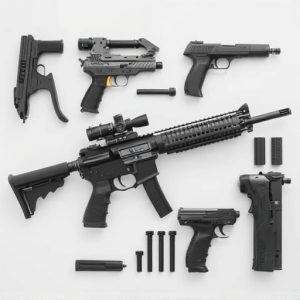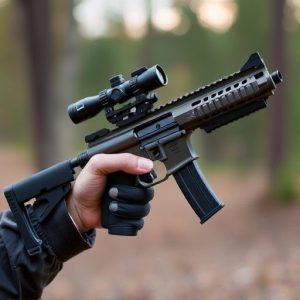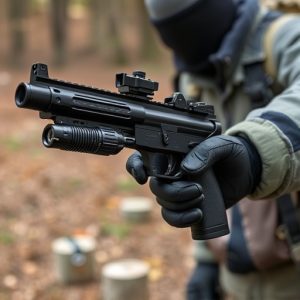Mastering Non-Lethal Home Defense: Weapons, Laws, and Strategies
Non-lethal home defense weapons offer a safer and legal alternative to traditional firearms, effect…….
Non-lethal home defense weapons offer a safer and legal alternative to traditional firearms, effectively deterring intruders while minimizing harm. Key options include pepper spray for temporary incapacitation, stun guns for subduing attackers with electrical charges, and personal alarms for alerting authorities. Users must be well-informed about the legal use of these devices, maintain them regularly, and receive proper training to ensure their effective deployment. Selecting the appropriate non-lethal weapon depends on individual skill, local regulations, and potential threats. These tools can be part of a broader home security strategy that includes sophisticated systems and vigilant behavior. It's crucial to understand each weapon's functional aspects and user-friendliness within the context of ethical self-defense. By adhering to legal requirements and ethical guidelines, individuals can effectively use non-lethal home defense weapons as part of a comprehensive safety strategy, promoting protection without resorting to lethal force.
When it comes to safeguarding one’s home, the debate over lethal versus non-lethal personal defense measures is a critical one. This article delves into the realm of non-lethal home defense weapons, offering readers an informed perspective on their utility, legality, and ethical use. From examining top options for effective protection to outlining essential training and strategy principles, the discussion aims to empower individuals with knowledge for making prudent decisions in the event of a security breach. By understanding the scope of non-lethal home defense weapons, one can appreciate their potential role in deterring or neutralizing threats without causing permanent harm.
Understanding Non-Lethal Home Defense Weapons: An Overview
Non-lethal home defense weapons serve as a critical alternative to traditional firearms, offering a means to protect one’s self and loved ones without causing permanent harm or loss of life. These tools are designed to incapacitate an intruder temporarily, allowing for the opportunity to escape or for authorities to apprehend the threat. Among the various options available, pepper spray, stun guns, and personal alarms are commonly recognized within this category. Pepper spray, for instance, uses a powerful irritant to create a temporary but debilitating effect on the attacker’s eyes and respiratory system. Stun guns deliver a high-voltage electrical shock that can subdue an aggressor without death or serious injury. Personal alarms, on the other hand, are a non-physical defense mechanism that can deter intruders by alerting neighbors and law enforcement of a breach. It’s crucial to understand the legal implications and the proper use of these weapons, as well as to maintain them regularly to ensure they function correctly when needed. Selecting the right non-lethal home defense weapon involves considering factors such as local laws, personal comfort, and the specific threat one might face. Proper training and familiarity with the chosen device are paramount for effective and safe deployment in a defensive situation.
Top Non-Lethal Home Defense Weapons for Effective Protection
Non-lethal home defense weapons offer a viable alternative for protecting one’s residence without resorting to deadly force. When considering effective non-lethal options, it’s crucial to evaluate their functionality, ease of use, and legal implications. Pepper spray, for instance, is a widely recognized deterrent due to its ability to incapacitate an intruder with a highly irritating cloud of oleoresin capsicum. It temporarily impairs the attacker’s vision and respiratory system, providing precious time to escape or contact authorities. Another effective tool in this category is the stun gun, which delivers a high-voltage electric shock that can subdue an aggressor without causing long-term harm. Stun guns are designed with safety features to prevent accidental discharges and are often accompanied by other defensive devices like flashlights with a stun feature, combining personal protection with everyday utility. Stunning devices like these should be part of a comprehensive home defense plan, alongside security systems and situational awareness practices. The selection of non-lethal home defense weapons should prioritize their reliability in various scenarios, ensuring that they are ready for use when needed most. It’s also important to familiarize oneself with local laws regarding the possession and use of these devices to avoid any legal complications.
Legal Considerations and Ethical Use of Non-Lethal Defense Tools
When considering non-lethal personal defense options, it’s crucial to understand the legal framework and ethical implications surrounding their use. Non-lethal home defense weapons can serve as a deterrent or incapacitant against intruders, offering a safer alternative to firearms in situations where lethal force may not be justified or desired. Legal considerations vary by jurisdiction, with some regions imposing strict regulations on the types of non-lethal weapons permissible for civilian use. Homeowners must familiarize themselves with local laws to ensure compliance and avoid unintentional legal infractions that could arise from their defensive measures.
Ethical use is another critical aspect of employing non-lethal defense tools. The primary intent should be to protect life without causing unnecessary harm. Ethical considerations dictate that any defensive action taken with such devices must be proportional and reasonable under the circumstances. Training in the proper use of these weapons is essential, as improper handling can lead to accidents or injuries. It’s important for users to understand not only how to deploy a non-lethal weapon effectively but also when its use is justified. By prioritizing legal compliance and ethical application, individuals can confidently integrate non-lethal home defense weapons into their safety plans, enhancing their ability to protect themselves and their loved ones without resorting to lethal violence.
Training and Strategy: Maximizing the Efficacy of Non-Lethal Defense Systems
Non-lethal personal defense systems can be highly effective in deterring and neutralizing threats, provided individuals are well-trained in their use. Effective training for non-lethal home defense weapons is paramount as it ensures users understand the capabilities and limitations of these tools. A comprehensive training regimen typically includes situational awareness exercises, proper handling of devices like stun guns or pepper spray, aiming techniques, and understanding the legal implications of using such devices. Strategy in the use of non-lethal defense systems is also critical; it involves assessing the threat level, choosing the most appropriate weapon for the situation, and employing tactics that minimize risk to both the defender and the intruder. Training should simulate real-life scenarios to prepare users for a variety of confrontations. By integrating non-lethal defense strategies into daily routines and maintaining proficiency with these systems, individuals can enhance their personal security and react confidently when faced with a threat in the sanctity of their homes. In this context, non-lethal home defense weapons serve as a deterrent that can incapacitate an intruder long enough for authorities to intervene or for the occupants to escape. The strategic placement of these systems within the home can further complement the effectiveness of the training received, ensuring a well-rounded approach to personal defense.


